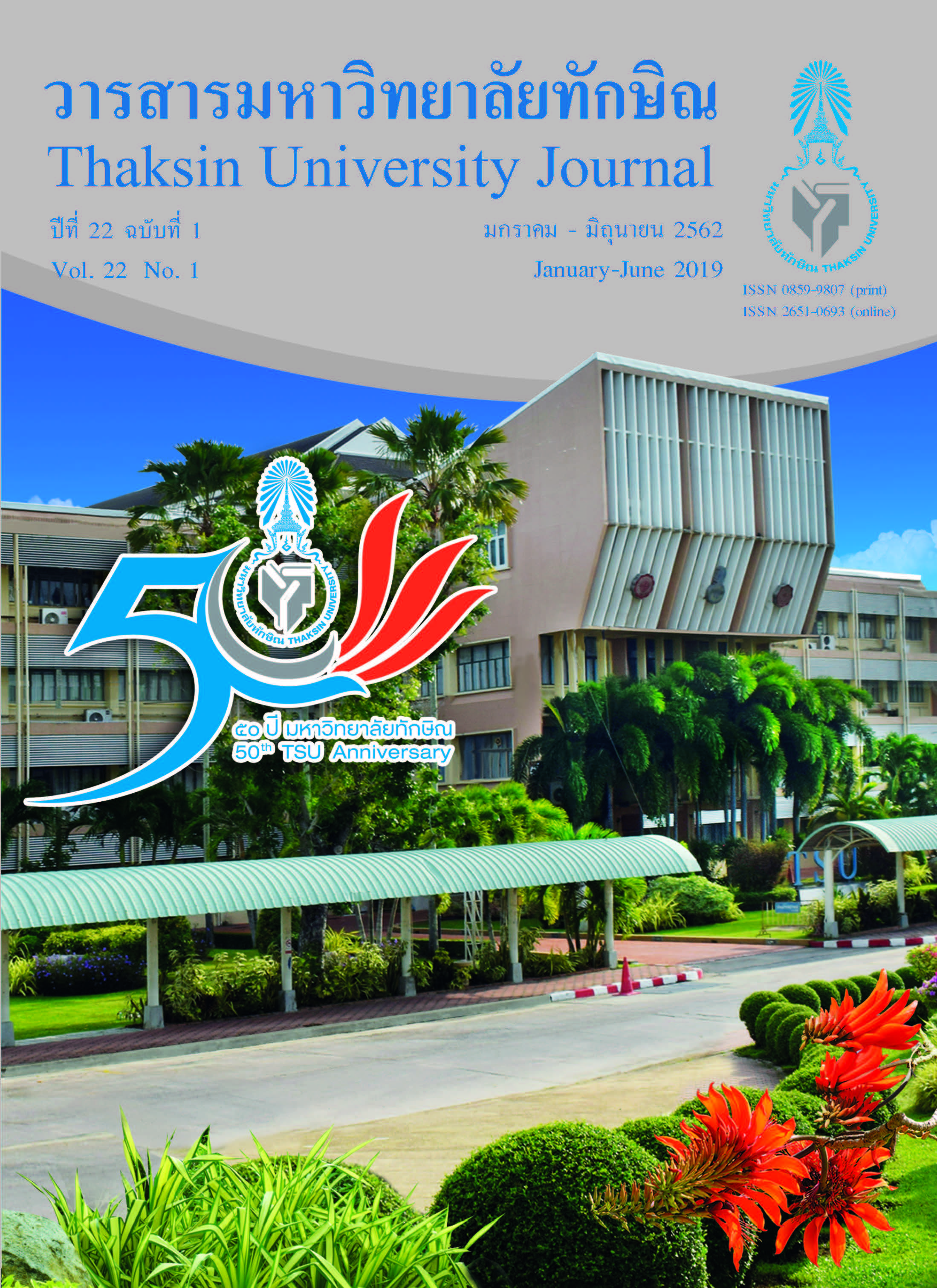Satisfaction Test of Borneo Camphor Liquid Inhaler from Essential Oil of Amomum biflorum Jack
Main Article Content
Abstract
The aim of the study was to formulate borneo camphor liquid inhaler from essential oil of Amomum
biflorum Jack. Three formulas were prepared and used for the assessment of satisfaction of 99 volunteers. The composition of the essential oils of the 3 formulas A, B and C had a concentration of 1 % , 5 % and 3 % ,
respectively. It was observed that formula A and C had the overall satisfaction score and the scores were
statistically significant when compared to the scores obtained for formula B at the 95 % confidence level.
Therefore, formula C was selected for the evaluation of product stability. Testing of physical stability
parameters of color, odor and pH were performed under 3 conditions namely; 24 hours at temperatures of
25°C, 30°C, 35°C and 40°C; Freeze-thaw stability condition and short-term temperature stability condition at
day 90. The results indicated there were no changes. The products (freshly prepared at day 0; after freezethaw stability test and after short-term temperature stability test) were subjected to GC-MS analysis in order to determine the chemical components. Furthermore, the results from the GC-MS analysis indicated that first five major chemical components contained in all the three products were Menthol (44.10-49.27 %), Camphor (31.96-35.16 %), trans-p-(1-butenyl)-anisole (5.14-6.76 %), Borneol (5.72-5.90 %) and Isoborneol (3.24-3.67 %)
Article Details

This work is licensed under a Creative Commons Attribution-NonCommercial-NoDerivatives 4.0 International License.
References
Efficiency of Aroma Extracted from Thai Flowering Plants on Relaxation. King Mongkut's Agricultural Journal (Thailand), 30(2), 78-85.
[2] Subhadhirasakul, S., & Moosigapong, K. (2014). Relaxation Effect on Volunteers of Essential Oil from
Amomum biflorum Jack. Thaksin University Journal, 17(2), 17-25.
[3] Poncharoenchai, S. (2016). How to Make Pimsen Water Herbs (Online). Retrieved 10 February 2016,
from: https://www.gotoknow.org/posts/171231.
[4] Prince of Songkla University, Faculty of Traditional Thai Medicine. (2015). Formular of Liquid Pimsen
Inhalation. Handout of Traditional Pharmaceutics 1.
[5] Mahidol University, Medicinal Plant Information Center: Faculty of Pharmacy. (2013). Demonstration of
Medicinal Herbs (Online). Retrieved 2 October 2013, from https://www.youtube.com/watch?
v=mVK gzyQgaf0#action = share.
[6] Sittichai, N. (2004). Establishment of Thai Herbal Pharmacopoeia. Thai Journal of Phytopharmacy, 11(1),
21-32.
[7] Komoltri, C. (2012). Sample size calculation. Journal of Mental Health of Thailand, 20(3), 192-198.
[8] Lim, J. (2011). Hedonic Scaling: A Review of Methods and Theory. Food Quality and Preference, 22,
733-747.
[9] Likert, R. (1932). A Technique for the Measurement of Attitudes. Archives of Psychology, 140, 1-55.
[10] Zague, V., Silva, D. D. A., Baby A. R., Kaneko, T. M. and Valasco, M. V. R. (2007). Clay Facial Masks:
Physicochemical Stability at Different Storage Temperatures. International Journal of Cosmetic Science, 58, 45-51.
[11] USP NF. (2007). Rockville, MD: The United States Pharmacopeial Convention. Inc. 10-11.
[12] Thubthimthed, S. (2004). “Composition and central nervous system depressive effect of the essential oil
of Amomum biflorum” , In Proceedings of 30th Congress on Science and Technology of Thailand.
October 19-21, 2004, Impact Exhibition and Convention Center, Muang Thong Thani. Bangkok.

